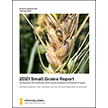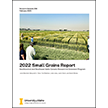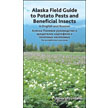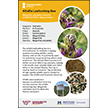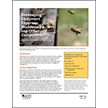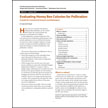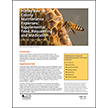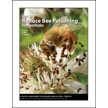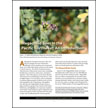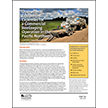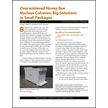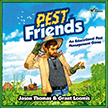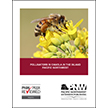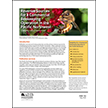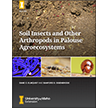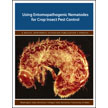Beneficial Insects
2021 Small Grains Report: Southcentral and Southeast Idaho Cereals Research & Extension Program
Packed with tons of agronomic data, disease ratings and end-use quality data — interspersed with reports about planting and weather conditions, insect and diseases issues and more — this 160-page...
2022 Small Grains Report: Southcentral and Southeast Idaho Cereals Research & Extension Program
Packed with tons of agronomic data, disease ratings and end-use quality data — interspersed with reports about planting and weather conditions, insect and diseases issues, and more — this 162-page...
Alaska Field Guide to Potato Pests and Beneficial Insects in English and Russian
This 128-page pocket-sized manual helps potato field workers scout for and identify economically important diseases, insects and weeds in potato crops in Alaska. Each pest or beneficial insect is...
The alfalfa leafcutting bee is a vital pollinator for multiple cropping systems, including alfalfa, canola, melons and carrots. This information card provides basic facts about and photographs of...
Beekeeping Equipment Expenses: Woodenware and Other Components
Woodenware for a typical honey bee colony includes vertically stackable boxes with removable frames, a bottom board, lid and a queen excluder. The most common design is Langstroth equipment.
Bumble Bee Parasites and Conservation in the Pacific Northwest
Nearly thirty species of native bumble bee call the Pacific Northwest home and provide important pollination services, even pollinating certain crops more effectively than honey bees. With this in...
Evaluating Honey Bee Colonies for Pollination
For commercial growers who rent honey bees for pollination and beekeepers who provide pollination services, here is information on honey bee colony strength evaluation, average number of colonies...
Honey Bee Colony Maintenance Expenses: Supplemental Feed, Requeening and Medication
Success in pollination, honey production and other aspects of a beekeeping business depends on honey bee health. Strong, thriving colonies require many inputs from the beekeeper, including feed...
How to Reduce Bee Poisoning from Pesticides
Covers causes of bee poisoning in the PNW, signs and symptoms of bee poisoning, and ways growers, beekeepers and pesticide applicators can reduce bee poisoning. Includes extensive tables listing...
Integrated Pest Management of Leafy Spurge
Leafy spurge is a highly invasive and aggressive weed that forms dense stands, significantly reducing the carrying capacity of rangelands or pastures by 50% to 75%. Part of an integrated pest...
Megachilid Bees in the Pacific Northwest: An Introduction
This publication is an introduction to the Megachilidae family of bees found in the Pacific Northwest. It highlights the characteristics of two important members of this family: leafcutting bees...
Operational Equipment Expenses for a Commercial Beekeeping Operation in the Pacific Northwest
When developing a business plan for a commercial beekeeping operation, a beekeeper must plan for honey production. Even if other income sources, such as pollination or nucleus/package/queen sales,...
Overwintered Honey Bee Nucleus Colonies: Big Solutions in Small Packages
This publication describes how commercial and backyard beekeepers can minimize colony losses through such best management practices as establishing nuclear colonies, which can provide quick...
Pest Friends is an educational strategy board game designed to help youth and adults understand the principles of Integrated Pest Management (IPM), an ecosystem-based approach for managing pests...
Pollinators in Canola in the Inland Pacific Northwest
Pollinators play an important role in crop productivity. Unfortunately, myriad pressures are causing their populations to decline steeply. While a single approach to solving the pollinator crisis...
Revenue Sources for a Commercial Beekeeping Operation in the Pacific Northwest
Pollination services and honey production are the primary revenue sources for a beekeeping business based in the Pacific Northwest. Those starting a beekeeping operation should focus on two to...
Soil Insects and Other Arthropods in Palouse Agroecosystems
Soil arthropods play a significant role in the soil ecosystem. But producers tend to be more familiar with that of other soil creatures, like earthworms and microbes. To address the knowledge gap,...
Using Entomopathogenic Nematodes for Crop Insect Pest Control
Nematodes (nonsegmented, elongated and colorless roundworms) can be beneficial or harmful to crops and other plants. The former (entomopathogenic nematodes) attack soilborne insect pests but are...







